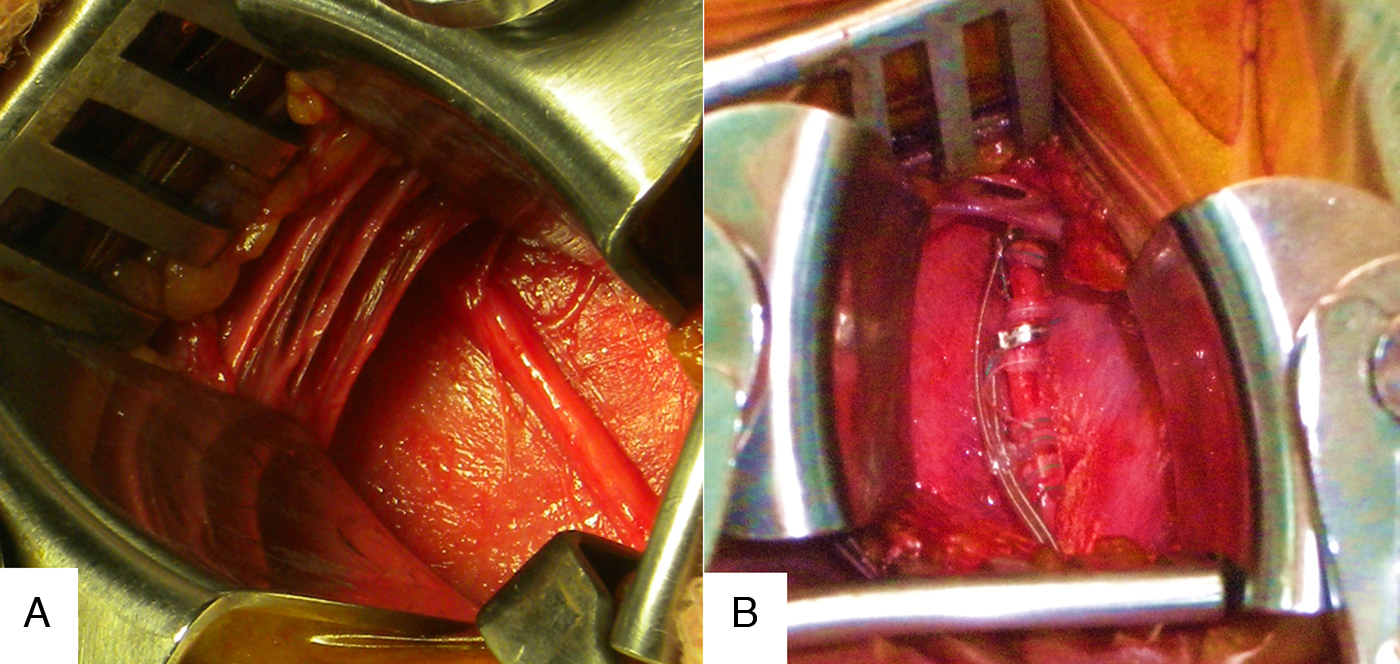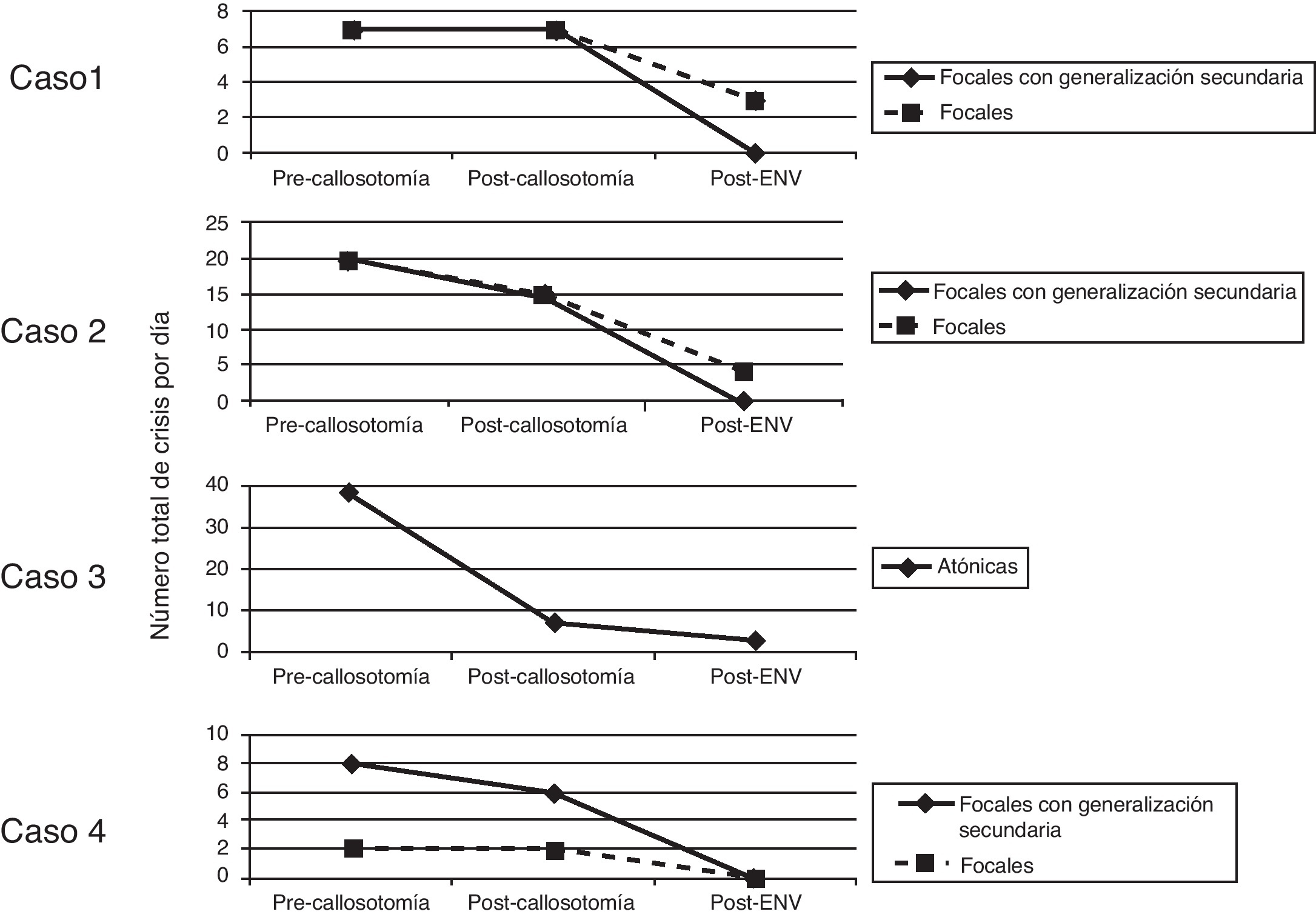Analizar los resultados de la estimulación del nervio vago en pacientes con epilepsia fármaco-resistente con callosotomía previa.
Material y métodosSe revisaron prospectivamente los datos de los pacientes con epilepsia fármaco-resistente que persistían con crisis incapacitantes tras la realización de callosotomía, en los cuales no fue posible identificar un foco epileptogénico, por lo que fueron tratados posteriormente con estimulación del nervio vago.
Se analizaron las variables: edad, género, etiología de la epilepsia, frecuencia y características de las crisis y clasificación según la escala de Engel antes y después del implante del estimulador vagal. Asimismo, se calcularon las diferencias porcentuales del cambio de la frecuencia de las crisis.
ResultadosSe identificaron 4 pacientes: 2 de género masculino y 2 de género femenino. La frecuencia total de las crisis había disminuido entre el 20 y el 81% tras la callosotomía en 3 pacientes, y en uno de ellos no se obtuvo ninguna respuesta favorable (Engel IVB), mientras que tras el implante del estimulador se redujeron entre el 57 y el 100% tras un tiempo promedio de seguimiento de 8,3 meses (3 a 12 meses). Las crisis generalizadas disminuyeron entre el 71,4 y el 100%, y las focales, entre el 57,7 y el 100%.
ConclusionesEn pacientes con epilepsia fármaco-resistente que permanecen con crisis incapacitantes a pesar de la realización de una callosotomía como cirugía primaria, la terapia con estimulación del nervio vago mostró ser una alternativa para reducir la frecuencia de las crisis.
To analyse the results of vagus nerve stimulation in patients with drug-resistant epilepsy and previous corpus callosotomy.
Materials and methodsWe prospectively reviewed data from patients with drug-resistant epilepsy who showed persistence of disabling seizures after undergoing corpus callosotomy, in whom it was not possible to identify an epileptogenic focus and who were subsequently treated with vagus nerve stimulation.
Variables analysed included: age, gender, aetiology of epilepsy, frequency and characteristics of the crises and Engel scale classification, before and after vagal stimulator implant. Furthermore, the percentage differences in seizure frequency changes were also calculated.
ResultsFour patients were identified: two male and two female. The total seizure frequency had decreased between 20% and 81% after corpus callosotomy in three patients and one of them did not show any favourable response (Engel IVB). Following implantation of the stimulator they became reduced to between 57% and 100% after a mean follow-up period of 8.3 months (range: 3 to 12 months). Generalised seizures decreased between 71.4% and 100%, and focal seizures between 57.7% and 100%.
ConclusionsVagus nerve stimulation therapy proved to be an alternative for the reduction of seizure frequency in patients with drug-resistant epilepsy who suffered disabling seizures despite undergoing corpus callosotomy as primary surgery.
Article

If it is the first time you have accessed you can obtain your credentials by contacting Elsevier Spain in suscripciones@elsevier.com or by calling our Customer Service at902 88 87 40 if you are calling from Spain or at +34 932 418 800 (from 9 to 18h., GMT + 1) if you are calling outside of Spain.
If you already have your login data, please click here .
If you have forgotten your password you can you can recover it by clicking here and selecting the option ¿I have forgotten my password¿.








